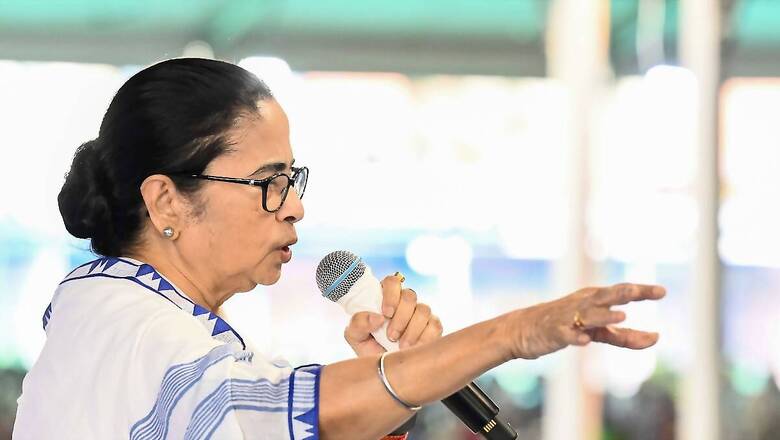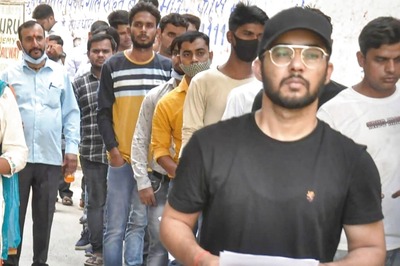
views
Sandeshkhali is to Mamata Banerjee what Marichjhapi was to Jyoti Basu. Marichjhapi was a genocide perpetrated by the first CPIM-led Left Front government on hapless Dalit refugees from East Bengal in 1979. Jyoti Basu’s government and his police used economic blockade, cut off lifelines, unleashed Muslim gangsters, burnt huts, and shot at refugees, compelling them to jump to death in the shark-infested estuary.
Reports of Marichjhapi indicate that “the men were first separated from women” and then “most of the young men were arrested and sent to jails and the police began to rape helpless young women at random.” Experts have averred that around 14,000 refugees were killed by Jyoti Basu’s government with 4500 families perishing in transit or while trying to escape Basu’s police and bullets.
Basu was never tried, no criminal charges were pressed against him and his ministers, nor did foreign governments refuse entry to him. Neither did the Ivy League universities discuss this genocide. A masterly and crafty effort by the Communists and Left-leaning intellectuals and academics ensured that the story of Marichjhapi was forever buried. The media was coerced into silence, and those refugees who had managed to escape to Kolkata to relay to the media the dastardly acts of the police and the Communist goons, were promptly arrested. The powerful CPIM state secretary Promode Dasgupta threatened a leading media house with withholding advertisements if it kept reporting on Marichjhapi.
Mamata Banerjee is more abrasive. Journalists reporting Sandeshkhali have been at the receiving end of the administration and the police. Journalist Santu Pan’s arrest from Sandeshkhali is the latest example.
Marichjhapi was the first time that the communist dispensation used mass murder as a weapon for political subjugation and dominance in West Bengal. Mamata Banerjee’s party has repeatedly used violence and retribution against its political opponents. The bloody post-violence in 2021 was one of the goriest expressions of that politics.
In Sandeshkhali, Mamata Banerjee’s party has been using coercion, rape, exploitation, and fear as tools for political control and hegemony. Like in Marichjhapi, in Sandeshkhali too, the police and administration have been willing collaborators in facilitating such politics and in sheltering those elements through whom this control is perpetuated. When the women of Sandeshkhali began protesting, a number of them narrated how the police, along with TMC cadres in police uniforms, came over to coldly threaten them into silence.
The Marichjhapi scale was much bigger, but the mindset that drove the Marichjhapi massacre and the Sandeshkhali subjugation and exploitation is the same. It is a mindset that is essentially shaped and driven by violence, which sustains itself on retribution and promotes the weaponisation of oppression and rape as a means to subjugate, control and batter into submission any attempts at democratic dissent and expression. In the TMC’s case, a number of women who have faced physical exploitation in Sandeshkhali were members of the TMC and belonged to the Hindu community. They were used as political slaves by the TMC’s local leadership led by Shajahan Sheikh and his accomplices. Fear and violence were used to silence them. Most of them narrated how they were directed to keep quiet and not venture out to complain lest they lose their husband and children.
Since the local police and administration worked as an extended arm of the party, these women could never lodge a complaint. Either the complaint was not accepted, or even when lodged, the complainant faced threat and physical abuse. In the case of Marichjhapi, the Left and communist intellectuals either justified the genocide or actively colluded in erasing its imprints. In the case of Sandeshkhali, the TMC’s patronised intelligentsia, whether in West Bengal or Delhi, have kept silent or have brazenly tried to indulge in a series of whataboutery.
When the Bengali Hindu refugees of Marichjhapi approached the Calcutta High Court seeking its intervention so that the blockade was lifted by Jyoti Basu’s administration, the high court ruled “against interference in the refugees’ movements and their access to food and water.” Jyoti Basu’s government persisted in the blockade in defiance of the court. Since “the police union was under CPM control, the court system had been effectively bypassed in this instance.” In Sandeshkhali, despite the Calcutta High Court saying that Section 144 could not be imposed, Mamata Banerjee’s police bypassed the order by slyly resorting to selective application of Section 144.
The CPIM being an organised party with an ideological veneer did not usually let its strongmen dominate. They were kept at the margins, supplied the party when necessary and carried out operations against political opponents. It was the articulate, erudite and soft-spoken leaders who exerted control over them. Many of these types, such as Shahjahan Sheikh, cut their teeth during communist rule. But their scale of operation and their influence was limited then. In Mamata Banerjee’s TMC, these elements emerged as powerful regional entities. Entities who ran empires of extortion, illegal trade, sustaining themselves on land-grabbing, running an armed Mafiosi. Their centrality in the TMC system is evident, they call the shots since they keep the party machinery well-supplied and well-oiled.
For nearly 50 days now, Shahjahan Sheikh has been absconding after engineering attacks on central agencies and the state and local police have made no effort to locate and arrest him. Mamata Banerjee has called Shahjahan Sheikh a popular leader who does a lot of social work, indicating his clout and role in running and sustaining her party. The TMC is propped by elements like Shahjahan Sheikh. They control the police, the administration does their bidding and their writ runs across districts where the courts and law enforcers are practically non-existent.
Mamata Banerjee has ceded space and regions to them. These are liberated zones, not in the Maoist sense, but in a very exploitative sense. These are zones, where human worth and value have no meaning, where party workers and their family members are mere commodities. Where people in general are treated as political slaves, as bonded labourers of the party and are forced into submission of all kinds. The women of Sandeshkhali have at least spoken up after a decade of being tortured and exploited, but many across West Bengal continue to silently suffer.
Sandeshkhali has exposed the dark underbelly of the TMC’s politics. It is politics that stinks. Mamata Banerjee’s antics and her shameless theatrics are only meant to cover that stink. She speaks of being the only woman Chief Minister of India, but her track record on women’s security and dignity continues to be abysmal. As one of the woman protestors said, “She thinks by giving us some money in our accounts, she will buy our silence.”
Jyoti Basu got away with Marichjhapi, but Sandeshkhali will prove to be Mamata Banerjee’s undoing. Both of them indulged in criminality to perpetuate a mindless and violent political hegemony. For the last five decades, West Bengal has been the laboratory of such diabolic models of oppression. Sandeshkhali reminds us of the urgency of freeing the state from such a death grip.
The author is Chairman, Dr Syama Prasad Mookerjee Research Foundation & Member, BJP National Executive Committee. Views expressed in the above piece are personal and solely that of the author. They do not necessarily reflect News18’s views.


















Comments
0 comment